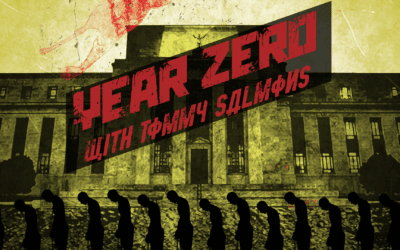My fellow libertarians will become hysterical with this commentary and send me to the intellectual gulag. Conservatives and liberals will join hands with them.
Why? Because they won’t like my alternative to Trump’s plan to rebuild America’s infrastructure.
Instead of throwing hundreds of billions of dollars at crooked states, at politically-connected construction companies, and at unionized labor, as Trump’s plan will do, my alternative is to resurrect the 1930s-era Works Progress Administration.
A new WPA could be a pathway to citizenship for Dreamers and other illegal immigrants, could be an opportunity for the unemployed and unskilled in inner cities and in the deindustrialized heartland to learn new skills and work habits, and could be a work requirement for those on welfare or those with a real or feigned disability who are still able to do some sort of work.
See, there is something in this for everyone to dislike: Liberals will dislike it because they believe that work requirements are demeaning to those on welfare or disability, establishment Democrats will dislike it because they are beholden to their union constituency, conservatives will dislike it because they believe that the free market will fix everything, establishment Republicans will dislike it because they are beholden to their business constituency, and libertarians . . . well, libertarians are covered in brain shrapnel from their heads exploding at the thought of adopting one of FDR’s socialist-like programs.
To all of them, I say: The idea is better than the alternative. It’s about tradeoffs, not ideological purity.
The idea come to my mind while hiking in beautiful Sabino Canyon, which is two miles from my house on the outskirts of Tucson. The stone bridges, restrooms and other infrastructure in the canyon are marked with the initials “WPA,” and were so well-built that they are still in good condition eight decades later.
It’s the same with sidewalks in the older section of Tucson near the University of Arizona. And it’s the same with the massive stone-lined drainage system and corresponding parks and paths near my boyhood home in St. Louis, Missouri, a system known as River de Peres.
Similar WPA infrastructure can be found in just about every state, including Midway Airport in Chicago, the River Walk in San Antonio (where I worked as a bartender), Dealey Plaza in Dallas (where JFK was shot), Schenley Park in Pittsburgh, and scores of architecturally-appealing schools, courthouses, libraries, stadiums, and other structures still seen as public centerpieces today.
A debate continues to this day about whether the WPA was a boondoggle or a boon to the economy, but judging by the infrastructure it left behind, it was a success. In any event, putting the quantifiable and tangible aside, there were no doubt unmeasurable benefits of the program, such as a feeling of self-worth among the participants. And in the language of the right, it probably engendered feelings of esprit de corps and citizenship; or in the language of the left, a sense of community.
In my insensitive, judgmental language, it’s frigging infuriating to see able-bodied Americans receiving taxpayer dollars while sitting on their fat asses amidst graffiti, trash, and decay. Wouldn’t it be better for them, for their communities, and for society as a whole if they worked in an updated version of the WPA?
At its peak in 1938, the WPA employed 3.3 million people, or about 2.5% of the population at the time. This would be equivalent to 8.1 million people today. WPA workers were paid the prevailing wage for a given locale.
Economists say that the economic situation is different today—that unlike in the Great Depression, the nation is near full employment. They’re full of baloney. They calculate the potential labor force by including the number of people who are seeking work, and by excluding those who choose to sit on their fat asses—oops, sorry, there I go again—instead of seeking work. If economists spent ten minutes looking at the demographics of the unemployed, they would find that there are at least 8.1 million of them who are quite capable of working but simply choose not to. Heck, there are nearly eight million Americans on SSI alone. Certainly, a high number of these have abused the system by feigning a disability or have legitimate disabilities that keep them from working in their former occupation but would not keep them from answering the phone or handling paperwork at the WPA.
What is truly different today is political leadership. Whatever one may think of FDR’s policies, he was an inspiring leader who could get most of the nation behind his ideas. Hillary, Donald, Bernie, Nancy, Paul, Chuck, et al. don’t come close. Another difference is that in spite of today’s diversity dogma, it’s difficult to imagine that Americans of all races, ethnicities, politics, and walks of life could come together as a team to build even one bridge in Sabino Canyon.
Still, I’m sticking with my idea and don’t care if libertarians, liberals and conservatives shun me. To quote Dr. Seuss, “Be who you are and say what you feel, because those who mind don’t matter, and those who matter don’t mind.”






























